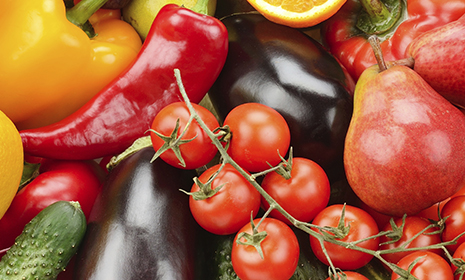We hear the message loud, clear, and often: eat well, move more, live longer. For many people, this is frequently a case of ‘easier said than done’ as our environment makes it harder to eat healthier foods. Most of us know that one of the age-old secrets to looking and feeling our best is a healthy diet and physical activity, but just exactly what this means for our day-to-day lives can be less obvious. With information bombarding us from all sides, knowing where to get simple and easy-to-follow healthy eating tips can be hard.
Some diets may work in the short term, but for long-term health, the key is to develop good eating habits in line with a healthy, balanced diet. It’s about understanding which foods and food groups positively impact your health. Thinking more carefully about what’s on your plate, and your choices when snacking or out and about can help improve your overall health and help you to manage your diabetes.
What is The Eatwell Guide?
The Eatwell Guide, developed by Public Health England, replaces the Eatwell Plate to show, visually, the types and proportions of food needed for a healthy and environmentally sustainable diet in the UK. Cultural and ethnic versions of The Eatwell Guide have been created which include foods commonly eaten in African and the Caribbean communities and South Asian communities to help people make long-term healthy dietary choices.


It aims to make it easier for you to identify foods you should try to eat more of, foods you should aim to eat less of, and how much of what you eat overall should come from which food group. Following the guidelines can help with effective diabetes management, encouraging you to make healthier choices for your body.
The Eatwell Guide applies to the general population, but not to children under two as they have different nutritional needs. If you have diabetes, you might want to check with your registered dietitian on how to adapt The Eatwell Guide to meet your own individual needs.
What are the food groups?
The main food groups are:
- Fruit and vegetables
- Potatoes, bread, rice, pasta, other starchy carbs
- Dairy and alternatives
- Beans, pulses, fish, eggs, meat and other proteins
- Oils and spreads
In addition, it includes drinking fluids such as water, plain milk, and sugar-free drinks throughout the day to stay hydrated. Fruit juice and smoothies should be limited to a maximum of one small glass (150ml) a day as they contain free sugars.
There are also some foods and drinks that do not fall into these groups.
Foods high in fat, salt and sugar, such as cakes, chocolate, crisps and fizzy drinks, have been placed outside of the main image. Described as ‘foods to eat less often and in small amounts’, they are not considered essential to a healthy, balanced diet.

What does it mean for diabetes?
Most of the advice from the Eatwell Guide applies to everyone, for example eating five portions of fruits and vegetable is healthy advice for everyone. However, for some people with diabetes who may be following specific named diets such as a low carb diet or a Mediterranean diet, the proportions of the food groups may be different. For example the proportion of healthy fats or carbohydrates. The Eatwell Guide can help you look at what your current meals, drinks and snacks are and find healthier options from each food group.
Simply being more aware of what you’re eating, and just how much, can make a real difference in managing your blood sugar levels and overall health.
What should I be eating and drinking?
For long term health, people living with diabetes are advised follow a healthy, balanced diet. A healthy diet is all about variety and choosing healthier options of different foods from each of the main food groups every day to help you get the wide range of nutrients your body needs to stay healthy. This means:
- Eat more fruits and vegetables, choose wholegrain carbohydrates such as wholewheat pasta and brown rice, eat some beans and pluses, fish, seafood, and nuts.
- Eat less red meat and processed meat like bacon, ham, and sausages.
- Have some dairy such as cheese and yoghurts or non-dairy alternatives like unsweetened soya products.
- Choose healthier fats such as olive oil and rapeseed oil.
- Eat less sugar sweetened drinks and sugar sweetened foods as these do not form part of a healthy diet.
- Drink plenty of sugar free fluids throughout the diet, plain water is the best choice.
- Many foods, such as casseroles or a sandwich, are combinations of the food groups in the Eatwell Guide. With these meals, check the ingredients and think about how these fit with the sections on the guide to help you follow a balanced diet.
Top tips to keep your healthy diet on track:
- Hit target – aim for 5 portions of fruit and vegetables every day
- Choose wisely – opt for high-fibre, wholegrain varieties of starchy carbs where possible
- Choose unsweetened - go for unsweetened yoghurts, like plain yoghurt which is more important than low-fat yoghurt. When buying dairy alternatives, go for unsweetened, calcium-fortified versions.
- Splash out – all types of fish are good sources of protein and oily fish (such as mackerel, sardines and salmon) is particularly good and helps protect against heart disease. People with diabetes should aim for at least two portions of oily fish a week (more than the recommended amount for those without diabetes).
- Stay hydrated – each day, try and drink 6–8 glasses of sugar free fluid such as plain water, milks and unsweetened tea or coffee
- Protein power – include some beans, pulses, eggs, nuts and poultry like chicken or turkey in your diet, which are also packed with vitamins and minerals. Beans, peas and lentils are good alternatives to meat as they are naturally low in saturated fat and high in protein, fibre, vitamins and minerals.
- Sweet enough – limit foods and drinks high in saturated fat, salt and free sugar like crisps, sweets and cakes. They should be eaten less often and in small amounts.
- Juiced out – limit your intake to no more than 150ml of fruit juices and smoothies a day.
- Choose unsaturated fat such as vegetable oil, rapeseed oil or olive oil instead of butter, palm oil or ghee.
- Sensible salt – adults should not have more then 6g of salt a day.
Don’t panic! You shouldn’t feel that all your favourite foods, much-loved meals and days of treating yourself are over… that is not what The Eatwell Guide is asking of us. Instead, it’s suggesting that we pay closer attention to how we ‘build’ our meals and snacks throughout the day – Are there enough vegetables on your plate? Can you swap your usual white carbs to a tasty wholegrain equivalent? Have you hit that all-important 5-a-day? How many glasses of water have you had? What foods make up your snacks?
So, why not give it a go? If you’re stuck for ideas, check out our recipe finder to discover healthy meals that the whole family will love.

